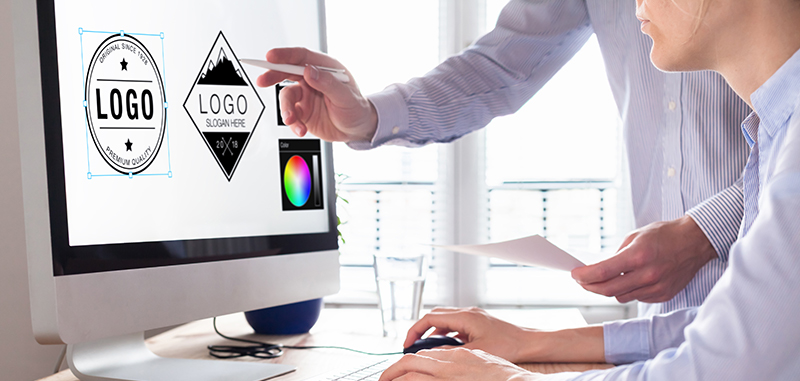
If you’re launching a new brand (or refreshing an old one), the look of your logo isn’t merely a decorative decision. Your logo is the encapsulation of the values and feelings that your brand stands for.
Designing a new logo can be a thrilling creative opportunity. But as you do it, we encourage you to think about your logo not only as an image on a computer screen, but as a composition of ink on a label. When your logo moves from the virtual to the physical realm, it may take on unexpected characteristics based on variables like the printing technology used, the label stock it’s printed upon, or even the size of the label— factors that are important to keep in mind to maintain your carefully-crafted brand identity.
Here are a few label facts to consider as you design or redesign your logo:
Watch Out for Overlapping Colors
Common plate-based printing technologies (such as flexography) involve ink-covered plates pressing against a printing surface (like label stock) to create text and images. Multi-colored images are routinely created using four or more individual plates, each delivering a separate color to create the image. Extreme precision is required to align the plates. The process of aligning the plates is called registering. Even minute variations in the registration process will lead to ink appearing where it was not meant to go. This is called “misregistration.”
Misregistration is most noticeable where two contrasting colors abut each other. The colors might mix along the border, creating a third, unintended color. Conversely, there may be an unintended gap between colors. Skilled printers can correct for these effects using a certain technique available either in the pre-press process or on press.
You can avoid complications and unexpected steps in production processes by incorporating a little whitespace between the colors in your logo. The Label Printers’ own logo provides a good example of this. Notice how the blue, green, and orange don’t quite make contact. The whitespace gives our logo a sense of movement, and it's well-suited to the printing press.
It’s true that these challenges can be mitigated by use of digital printing technology. But, why not assure your logo is ready to look great regardless of the technology used to print it?
The Label Stock Matters
A bright and vivid image may look amazing on your computer screen. If it's printed on paper, however, it can lose its vibrancy. Or, if it's printed on colored paper, the tones change.
The same principle applies to labels. A logo with soft pink lettering, for example, may take on unwanted orange tones if printed on unbleached paper face stock. Or, if the logo has bright, neon-like imagery, it may lose a considerable amount of punch if printed onto an absorbent substrate.
The best way to prevent this is to consult with an experienced label printer who can suggest things that will minimize the effects of your face stock material or color on the look of your logo, whether it's pre-treating the material, or choosing a material that gives the same look (or the same economy) but will show your logo's colors to their best advantage.
Simple = Flexible
The urge to cram every design flourish you can think of into your logo can be irresistible. Did we mention that logo design is fun?
Remember, however, that your logo will most often appear on the small scale — on product labels that cover only a few square inches — not on 17-inch laptop screens. Busy designs can become illegible when shrunk.
Another consideration: You might at some point want to print black and white versions of your logo on items like packaging and shipping labels. But not every logo design will translate well to monochrome. More complex designs may render into, essentially, blobs when printed in black and white.
For best results, channel your design creativity into a simple, attractive logo design that makes a strong impact. Minimalism is in, after all.
Ask for Guidance
Whether you’re a graphic design expert or a neophyte, it’s always helpful to have a partner in the logo design process. A good label printer will explain to you what to expect from different printing techniques, materials, and inks and will offer practical design tips to ensure your printed logo matches your vision. To talk to an expert label printer today, contact us here.

